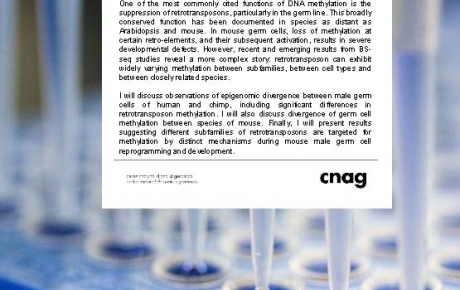15/11/2012 - 1pm
Aula Fèlix Serratosa - PCB

One of the most commonly cited functions of DNA methylation is the suppression of retrotransposons, particularly in the germ line. This broadly conserved function has been documented in species as distant as Arabidopsis and mouse. In mouse germ cells, loss of methylation at certain retro-elements, and their subsequent activation, results in severe developmental defects. However, recent and emerging results from BS-seq studies reveal a more complex story: retrotransposon can exhibit widely varying methylation between subfamilies, between cell types and between closely related species.
I will discuss observations of epigenomic divergence between male germ cells of human and chimp, including significant differences in retrotransposon methylation. I will also discuss divergence of germ cell methylation between species of mouse. Finally, I will present results suggesting different subfamilies of retrotransposons are targeted for methylation by distinct mechanisms during mouse male germ cell reprogramming and development.











